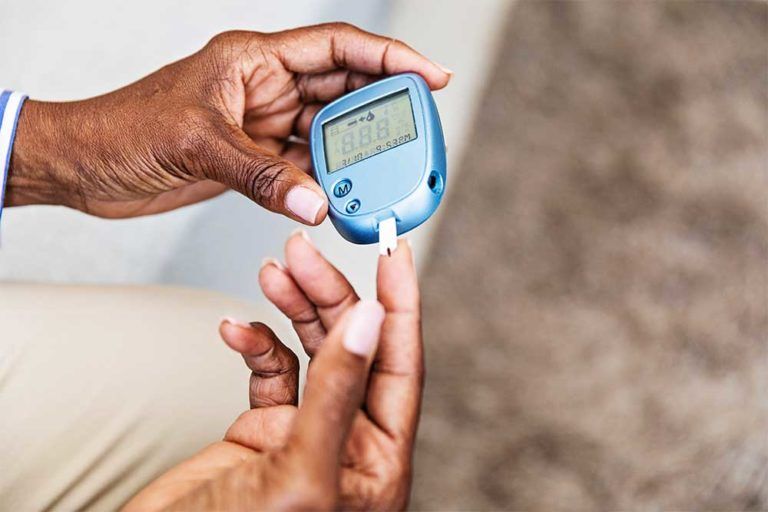A patient’s BMI has become a popular starting point for determining someone’s risk for health conditions related to weight.
BMI (Body Mass Index) is a commonly used way to determine your body fat. It is calculated by comparing your weight to your height, and it was invented in 1832 by a Belgian mathematician, statistician, and astronomer named Adolphe Quetelet. He called it the Quetelet Index. A scientist named Ancel Keys renamed it in 1972. It’s been known as the BMI ever since.
Although you may not be familiar with Ancel Keys, he has had an enormous influence on U.S. dietary habits. He conducted a study in 1958 of seven different countries. The object was to determine whether diet had an influence on cardiovascular disease. He was convinced that a high-fat diet would cause heart disease, and he selected his data to support that idea. He didn’t include countries like Holland and Norway whose people had little heart disease even though they ate a lot of fat, and he also didn’t include countries like Chile whose people had a high rate of heart disease even though they didn’t eat a lot of fat. Many respected scientists of the day criticized his work, and members of the American Medical Association were among their number. So was a scientist named John Yudkin, who advanced the idea that sugar, and not fat, was to blame for people developing cardiovascular disease.
Ancel Key’s work, despite his cherry picking, was so influential that the U.S. Department of Agriculture (USDA) adopted his ideas and advocated a low-fat, high-carbohydrate diet for everyone. Implementation of his ideas in the late 1970s resulted in the start of the obesity epidemic in the U.S., followed very soon after by the type 2 diabetes epidemic.
What is the exact equation? To calculate your BMI, convert your weight to kilograms and your height in meters. Divide your weight by the square of your height, and the result is your BMI. If you don’t want to bother converting to kilograms and meters, make the same calculation of weight divided by the square of your height, and then multiply by 703. (Weight should be in pounds; height should be in inches.)
You can easily find a BMI calculator on the internet, and if you’ve had a recent checkup, there’s a good chance your physician discussed your BMI with you at that time. Why does your BMI matter? You probably already know the answer to that, thanks to its massive popularity. It’s a way of determining your body fat. The BMI is not a diagnostic tool, because it doesn’t measure fat directly, but it is an easy way to screen people for potential weight problems. Physicians use it for everyone over the age of two.
A patient’s BMI has become a popular starting point for determining someone’s risk for health conditions related to weight. The experts encourage adults to keep their BMI between 18.5 and 24.9. For those with a BMI of 25 or more, the risk of developing a chronic disease such as arthritis, cancer, and cardiovascular disease begins to increase.
How accurate is a BMI? There are two groups of people who should not rely just on their BMI:
- Highly muscular people, including some athletes. Muscles weigh more than fat, so it’s possible for a person to be extremely fit and still have a BMI that is in an unhealthy range. When that happens, then the BMI isn’t a good predictor for disease simply because the athlete is actually perfectly healthy.
- Some people who have a normal BMI but whose body fat, in comparison to lean muscle, is higher than it ought to be. This could happen in a case where someone successfully controls the number of calories that are eaten but doesn’t exercise and therefore has too much fatty tissue, even though that fact isn’t apparent.
If there’s a question in your mind about the accuracy of your BMI, are there other options? Yes, although some are more reliable than others. Any of the methods that involve complicated machines will be more expensive:
- A DEXA (dual energy X-ray absorptiometry) scan is used to measure bone density, but it can also be used to calculate body fat. The process involves determining the amount of lean soft tissue and subtracting that from a person’s total weight. It’s accurate, but the problem is that it involves radiation. It is also one of the more expensive methods and involves finding a place that is equipped to make the measurement.
- Hydrostatic weighing: This involves being submerged in water and then weighed. It depends on water displacement. The amount of water you displace depends on the amount of fat in your body. Some fitness and health care facilities offer this as an option, or it can be found at universities. This method is accurate if it is done correctly, but not everyone likes getting wet.
- ADP (Air displacement plethysmography): This method relies on air displacement instead of water displacement. If you’ve heard of the Bod Pod, which is an ADP machine that is shaped a little like a large egg, then you might have some idea of what it involves. ADP is easier than hydrostatic weighing because it doesn’t involve any water.
- BIA (bioelectrical impedance analysis) sends a tiny electrical current through your body. The device measures your body water by measuring how hard it is for the current to travel through your body. Drinking water or exercising can both distort the results, so it’s important to have this done under consistent circumstances. However, BIA is not a particularly accurate method even then.
- Skinfold Calipers: This is an accurate method if it is done by someone who knows how to use the calipers correctly; it requires a great deal of precision. It works by taking measurements of the thickness of your skin when pinched by the calipers. Measurements are taken in several different places on your body, and there are equations that then calculate the amount of body fat you have based on the caliper measurements.























